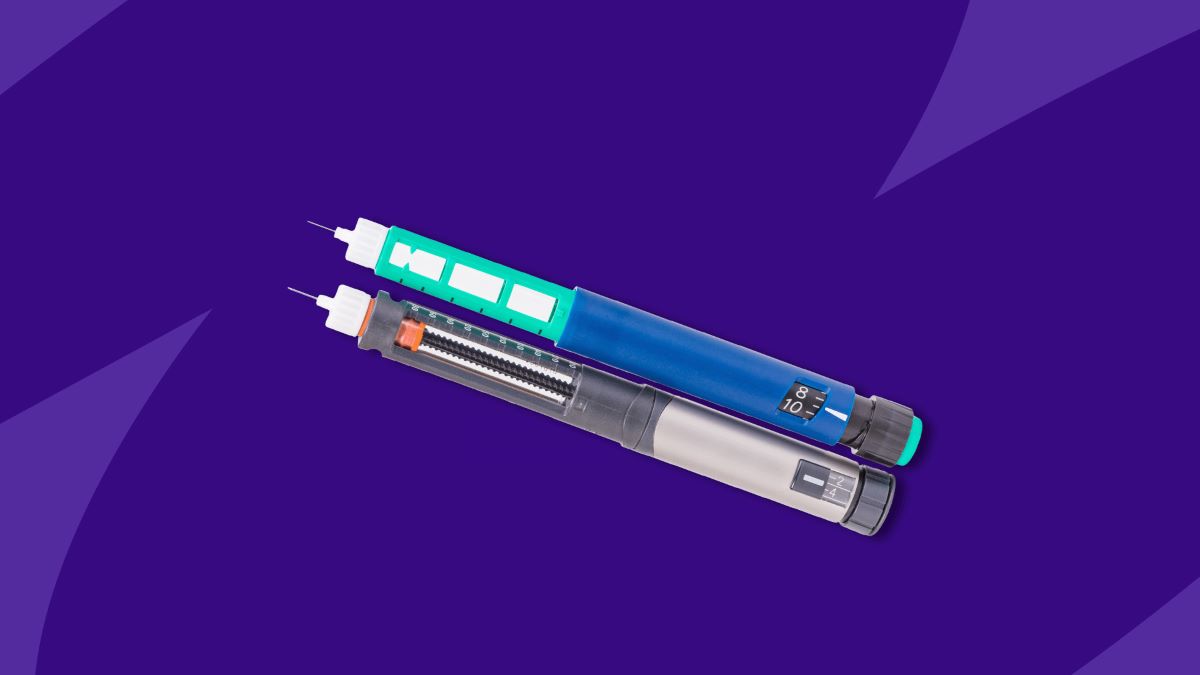Home>Finance>How To Get A Breast Reduction Covered By Insurance?


Finance
How To Get A Breast Reduction Covered By Insurance?
Published: November 18, 2023
Learn how to financially plan for a breast reduction surgery and increase your chances of insurance coverage with our comprehensive guide on finance and insurance options.
(Many of the links in this article redirect to a specific reviewed product. Your purchase of these products through affiliate links helps to generate commission for LiveWell, at no extra cost. Learn more)
Table of Contents
- Introduction
- Understanding Breast Reduction Surgery
- The Importance of Insurance Coverage
- Steps to Get Insurance Coverage for a Breast Reduction
- Research Your Insurance Policy
- Gather Relevant Medical Documents
- Consult with a Board-Certified Plastic Surgeon
- Submit a Pre-authorization Request
- Appeal If Your Request is Initially Denied
- Follow and Document Non-surgical Treatment Options
- Obtain Letters of Medical Necessity
- Submit a Strong Appeal Letter
- Conclusion
Introduction
Choosing to undergo breast reduction surgery can be a life-changing decision for many individuals. It can alleviate physical discomfort, improve self-esteem, and enhance overall quality of life. However, the cost of the procedure can be a barrier for some people. That’s where insurance coverage comes in.
Insurance coverage for breast reduction surgery can provide financial relief and make the procedure more accessible to those who need it. It’s important to understand the criteria and steps involved in getting insurance to cover breast reduction surgery.
In this article, we will explore how to navigate the process of getting a breast reduction covered by insurance. We’ll discuss the importance of insurance coverage, the steps you can take to increase your chances of approval, and the documentation and appeals process.
Keep in mind that each insurance plan and case is unique, so results may vary. It’s always best to consult with your insurance provider and a qualified plastic surgeon to understand the specific requirements and options available to you.
Now, let’s delve into the details of getting insurance coverage for a breast reduction procedure.
Understanding Breast Reduction Surgery
Breast reduction surgery, also known as reduction mammoplasty, is a surgical procedure aimed at reducing the volume and size of the breasts. It involves the removal of excess fat, glandular tissue, and skin in order to achieve a more proportionate and balanced breast size.
While breast reduction surgery is often sought for cosmetic reasons, it can also provide significant medical benefits. Women with overly large breasts may experience physical discomfort and a range of health issues, including back, neck, and shoulder pain, posture problems, bra strap indentations, and skin irritation. By reducing the size of the breasts, these symptoms can be alleviated, improving both physical comfort and functionality.
The breast reduction procedure is typically performed under general anesthesia. The surgeon will make incisions to remove excess tissue and reshape the breast. The specific technique used may vary depending on factors such as breast size, shape, and desired outcome. After the removal of tissue, the nipples are often repositioned to achieve a more natural and aesthetically pleasing appearance.
Recovery from breast reduction surgery can vary, but most individuals can expect some degree of swelling, bruising, and discomfort for a few weeks. It’s important to follow the post-operative care instructions provided by your surgeon to ensure proper healing and minimize complications.
Now that we have a basic understanding of breast reduction surgery, let’s explore why insurance coverage is crucial for those considering this procedure.
The Importance of Insurance Coverage
Insurance coverage for breast reduction surgery can play a vital role in making the procedure more accessible and affordable for individuals who need it. Here are a few reasons why insurance coverage is important:
Financial Relief: Breast reduction surgery can be a significant financial investment. Without insurance coverage, the cost of the procedure can be out of reach for many individuals. Insurance coverage helps mitigate the financial burden and allows individuals to undergo the surgery without worrying about exorbitant out-of-pocket expenses.
Improved Quality of Life: Breast reduction surgery can have a profound impact on an individual’s quality of life. Large and heavy breasts can cause physical discomfort, making it challenging to engage in daily activities, exercise, and even find well-fitting clothing. Insurance coverage ensures that individuals have access to the necessary medical intervention that can alleviate their symptoms and improve their overall well-being.
Medical Benefits: While breast reduction surgery is often seen as a cosmetic procedure, it can also provide important medical benefits. Large breasts can lead to chronic pain, back and neck problems, and other physical health issues. Insurance coverage recognizes the medical necessity of the procedure and supports individuals in addressing these health concerns.
Equal Access to Care: Insurance coverage helps ensure that individuals from various socio-economic backgrounds have access to necessary medical treatments. Without insurance coverage, only those who can afford the high cost of the procedure would be able to undergo breast reduction surgery, creating an inequitable healthcare system. Insurance coverage promotes equal access to care and allows everyone to benefit from the potential health and well-being improvements.
While insurance coverage for breast reduction surgery is essential, it’s important to understand the steps and requirements involved in obtaining this coverage. In the next section, we will explore the steps you can take to increase your chances of getting insurance coverage for a breast reduction.
Steps to Get Insurance Coverage for a Breast Reduction
If you are considering breast reduction surgery and want to get insurance coverage for the procedure, here are important steps to follow:
- Research Your Insurance Policy: Start by reviewing your health insurance policy to understand what coverage is included for breast reduction surgery. Look for specific criteria or requirements that need to be met for coverage.
- Gather Relevant Medical Documents: Collect all relevant medical records, such as physician notes, documentation of physical discomfort, and any previous attempts at non-surgical treatments. These documents will support your case for medical necessity.
- Consult with a Board-Certified Plastic Surgeon: Schedule a consultation with a board-certified plastic surgeon who specializes in breast reduction. They can assess your individual case, provide medical documentation, and guide you through the insurance approval process.
- Submit a Pre-authorization Request: Work with your plastic surgeon’s office to submit a pre-authorization request to your insurance company. This request includes medical documentation, photographs, and a formal request for coverage. Be thorough and provide as much supporting evidence as possible.
- Appeal If Your Request is Initially Denied: If your pre-authorization request is denied, don’t lose hope. You have the right to appeal the decision. Work with your plastic surgeon’s office to gather more evidence and provide a strong appeal.
- Follow and Document Non-surgical Treatment Options: Insurance companies often require documented attempts at non-surgical treatments before approving surgery. Follow any recommended treatments, such as physical therapy or pain management, and document your progress and lack of improvement.
- Obtain Letters of Medical Necessity: Request your plastic surgeon to provide letters of medical necessity, which outline the physical symptoms and the medical necessity of the breast reduction procedure. These letters can strengthen your case during the appeal process.
- Submit a Strong Appeal Letter: Craft a compelling appeal letter, emphasizing the medical necessity of the breast reduction surgery, the impact on your quality of life, and any supporting evidence you have gathered. Follow the guidelines provided by your insurance company for the appeals process.
Remember, each insurance company and policy may have specific requirements and processes. It is crucial to have open communication with both your plastic surgeon and insurance company to navigate the process successfully.
In the next section, we will conclude our discussion on insurance coverage for breast reduction surgery.
Research Your Insurance Policy
Before you embark on the journey of getting insurance coverage for a breast reduction, it’s essential to thoroughly research your insurance policy. Understanding the specific coverage and requirements outlined in your policy will help you navigate the process more effectively.
Here are some key steps to follow when researching your insurance policy:
- Read the Policy Documentation: Start by reading the policy documentation provided by your insurance company. Look for sections that pertain to coverage for plastic surgery procedures or specifically mention breast reduction surgery.
- Identify the Coverage Criteria: Look for criteria or requirements that need to be met in order to qualify for coverage. These criteria may include factors such as the size and weight of the breasts, documented physical symptoms, or previous attempts at non-surgical treatments.
- Find Out if Pre-authorization is Required: Determine whether pre-authorization is necessary for breast reduction surgery. Pre-authorization is the process of seeking approval from your insurance company before undergoing the procedure. It is important to know if this step is required and what documents need to be submitted.
- Check for In-Network Providers: Confirm whether there are specific plastic surgeons or healthcare providers that need to be in-network for your insurance to cover the procedure. Working with an in-network provider may increase your chances of getting coverage and prevent any surprise out-of-pocket expenses.
- Understand Coverage Limitations: Familiarize yourself with any limitations or restrictions on coverage. For example, your insurance may only cover a certain percentage of the cost, or there may be a cap on the maximum reimbursement amount.
- Talk to the Insurance Company: If you have any questions or need clarification on the policy details, reach out to your insurance company directly. They can provide specific information tailored to your policy and guide you through the process of obtaining coverage.
Gaining a thorough understanding of your insurance policy will empower you to navigate the process with confidence. It will also help you gather the necessary documentation and fulfill the requirements for coverage.
Once you have researched your insurance policy, you can move on to the next steps in obtaining insurance coverage for a breast reduction procedure.
Gather Relevant Medical Documents
When seeking insurance coverage for a breast reduction procedure, gathering relevant medical documents is crucial. These documents provide evidence of the medical necessity of the surgery and support your case for coverage. Here are the key steps to follow when gathering medical documents:
- Consult with Your Primary Care Physician: Start by scheduling an appointment with your primary care physician. Discuss your symptoms, physical discomfort, and desire for a breast reduction surgery. Your primary care physician can provide documentation of your health history and any previous attempts at non-surgical treatments.
- Obtain Physician Notes: Request copies of your physician notes and medical records related to your breast and back pain, posture problems, skin irritation, or any other symptoms caused by your large breasts. These notes can serve as additional evidence to support the medical necessity of the procedure.
- Collect Diagnostic Reports: Gather any relevant diagnostic reports, such as X-rays, MRIs, or mammograms, that have been conducted to assess your breast size, tissue density, or any underlying conditions. These reports can provide further evidence of the physical discomfort and health issues caused by your large breasts.
- Document Previous Treatments: If you have tried non-surgical treatments to alleviate the symptoms caused by your large breasts, gather documentation of these attempts. This can include receipts, medical prescriptions, physical therapy records, or any other evidence that shows you have explored alternative treatment options without success.
- Compile Photographs: Photographs can be powerful visual evidence of the physical impact of your large breasts. Take clear photographs of your breasts from different angles, highlighting any physical discomfort or visual asymmetry. These photographs can help your insurance company assess the severity of your condition and the potential benefits of a breast reduction procedure.
- Keep a Personal Journal: Consider maintaining a personal journal to document your daily experiences and challenges related to your large breasts. Note down any instances of physical pain, limitations in daily activities, emotional distress, or negative impacts on your self-esteem and quality of life. These personal accounts can provide insight into the impact of your large breasts and strengthen your case for insurance coverage.
By gathering relevant medical documents, you are creating a comprehensive file that illustrates the medical necessity and physical discomfort associated with your large breasts. These documents will be valuable when submitting a pre-authorization request and appealing any initial denials of coverage.
Now that you have gathered the necessary medical documents, you can move forward with consulting a board-certified plastic surgeon, which will be our next step in obtaining insurance coverage for a breast reduction procedure.
Consult with a Board-Certified Plastic Surgeon
A crucial step in obtaining insurance coverage for a breast reduction procedure is to consult with a board-certified plastic surgeon. Consulting with a qualified and experienced surgeon will not only provide you with valuable medical advice but also help you navigate the insurance approval process more effectively. Here’s what you need to know about this step:
Research and Select a Board-Certified Plastic Surgeon: Start by researching and identifying board-certified plastic surgeons in your area. Look for surgeons who specialize in breast reduction procedures and have a good reputation and track record of successful outcomes.
Schedule a Consultation: Once you have identified potential plastic surgeons, schedule a consultation appointment with them. During the consultation, you will have the opportunity to discuss your specific case, concerns, and goals for the breast reduction surgery.
Discuss Your Medical History and Symptoms: Be prepared to discuss your medical history, including any previous treatments or surgeries, and your specific symptoms and discomfort caused by your large breasts. Provide the surgeon with any medical documents and diagnostic reports you have collected.
Understand the Surgical Procedure: The plastic surgeon will explain the breast reduction procedure in detail, including the specific technique they recommend for your case. They will discuss potential risks, benefits, and expected outcomes of the surgery. It’s essential to have a clear understanding of the procedure and its potential impact on your physical and emotional well-being.
Receive Professional Assessment and Documentation: Through a physical examination, the plastic surgeon will assess the size and shape of your breasts, your specific physical symptoms, and any other relevant factors. They will provide you with professional documentation, including physician notes and other medical records, to support your case for insurance coverage.
Discuss Insurance Coverage: Utilize the consultation as an opportunity to discuss your insurance coverage and the requirements set by your insurance company. The plastic surgeon will have experience navigating insurance processes and can provide guidance on how to best prepare your case for approval.
Ask Questions: Don’t hesitate to ask any questions or address any concerns you may have during the consultation. The plastic surgeon is there to provide you with the information you need to make an informed decision about the surgery and guide you through the insurance approval process.
By consulting with a board-certified plastic surgeon, you will gain valuable medical insight, receive professional documentation for your case, and have a trusted ally who can navigate the insurance process with you.
Once you have consulted with a plastic surgeon, you can move forward with submitting a pre-authorization request to your insurance company, which will be our next step in obtaining insurance coverage for a breast reduction procedure.
Submit a Pre-authorization Request
After consulting with a board-certified plastic surgeon, the next step in obtaining insurance coverage for a breast reduction procedure is to submit a pre-authorization request to your insurance company. This request serves as a formal application for coverage and requires certain documents and information. Here’s what you need to know:
Work with Your Plastic Surgeon’s Office: Collaborate closely with your plastic surgeon’s office throughout the pre-authorization process. They have experience with insurance companies and can assist you in gathering the necessary documents and completing the required forms.
Compile Required Documentation: Your pre-authorization request will require specific documentation to support your case for medical necessity. This may include physician notes, diagnostic reports, photographs, and other relevant medical records. Ensure that all documentation is complete, accurate, and organized for submission.
Include a Letter of Medical Necessity: Along with the required documentation, it is important to include a letter of medical necessity written by your plastic surgeon. This letter explains in detail the physical symptoms you are experiencing, the impact on your quality of life, and the recommended breast reduction surgery as a solution. The letter should highlight how the surgery meets the criteria set by your insurance company.
Submit the Pre-authorization Request: Follow your insurance company’s guidelines for submitting the pre-authorization request. This may involve completing specific forms, attaching the required documentation, and providing any additional information requested. Make sure to meet any deadlines and keep copies of all documents for your records.
Keep Track of Communication: Maintain a record of all communication with your insurance company, including dates, names of representatives you speak with, and any information or instructions given. This will help you track the progress of your request and provide documentation in case of disputes or appeals.
Be Patient: The pre-authorization process can take time, and it is not uncommon to experience delays or requests for additional information from your insurance company. Stay in touch with your plastic surgeon’s office for updates on the progress of your request and be patient during the review process.
Remember that each insurance company has its own set of requirements and processes, so it’s important to follow their instructions explicitly. If your pre-authorization request is approved, you can move forward with scheduling the breast reduction surgery. However, if it is denied, don’t lose hope. You have the right to appeal the decision, which we will discuss further in the next step.
Now, you have submitted the pre-authorization request. In the next section, we will explore the steps to take if your request is initially denied and how to navigate the appeals process.
Appeal If Your Request is Initially Denied
Receiving a denial for your pre-authorization request does not necessarily mean the end of your pursuit for insurance coverage. In fact, it’s not uncommon for insurance companies to initially deny coverage for breast reduction surgery. However, you have the right to appeal their decision. Here’s what you need to know about the appeals process:
Review the Denial Letter: Carefully read the denial letter from your insurance company. This letter will outline the reasons for the denial and any specific requirements for filing an appeal. Understanding their rationale will help you craft a strong appeal.
Consult with Your Plastic Surgeon: Schedule a follow-up consultation with your plastic surgeon to discuss the denial and seek their professional guidance. Your surgeon can review the denial letter, provide additional documents or evidence to strengthen your case, and assist you in preparing the appeal.
Gather Additional Supporting Evidence: If your initial pre-authorization request did not include all the necessary supporting evidence, now is the time to gather more. This may include additional medical records, diagnostic reports, photographs, or letters from other healthcare providers supporting the medical necessity of the breast reduction surgery.
Craft a Well-Written Appeal Letter: Prepare a clear, concise, and compelling appeal letter to submit to your insurance company. Outline the reasons why you believe the denial was unjustified, provide supporting evidence and documentation, and emphasize the medical necessity of the breast reduction surgery. Be sure to follow any specific instructions or requirements outlined in the denial letter.
Submit the Appeal within the Timeframe: Pay close attention to the deadline for filing an appeal. Make sure to submit the appeal letter and any accompanying documents within the specified timeframe. Consider sending the appeal via certified mail or using a method that provides proof of delivery.
Maintain Communication: Stay in regular communication with your insurance company during the appeals process. Follow up on the status of your appeal, request updates, and document any conversations or correspondence. This will help you stay informed and organized throughout the process.
Consider Seeking Legal Assistance: If you encounter challenges or obstacles during the appeals process, it might be beneficial to consult with a healthcare attorney or a professional who specializes in insurance appeals. They can provide expert advice and guidance to maximize your chances of success.
Remember to remain persistent and advocate for yourself throughout the appeals process. It can take time, effort, and patience, but appealing the denial can lead to a successful outcome and ultimately provide the coverage you need for your breast reduction surgery.
In the next step, we will discuss the importance of exploring non-surgical treatment options and documenting your attempts, which can strengthen your case for insurance coverage.
Follow and Document Non-surgical Treatment Options
When seeking insurance coverage for a breast reduction procedure, many insurance companies require that you have attempted non-surgical treatment options before approving surgery. It is important to follow these requirements and document your attempts thoroughly. Here’s what you need to know:
Understand the Non-surgical Treatment Requirement: Review your insurance policy and the criteria set by your insurance company to determine the specific non-surgical treatments they require. This may include physical therapy, pain management, specialized bras, or weight loss programs.
Consult with Healthcare Providers: Seek guidance from healthcare providers, such as physical therapists or pain management specialists, to explore non-surgical treatment options. They can provide professional advice on exercises, modifications, or therapies that may help alleviate your symptoms and document your progress.
Follow Recommended Treatment Plan: Adhere to the treatment plan recommended by your healthcare providers. Attend all scheduled appointments, follow their instructions diligently, and actively engage in the prescribed therapies or exercises. Take note of any improvements or lack thereof during your treatment.
Document Your Progress: Keep a record of your non-surgical treatment journey. Maintain a diary that details your experiences, including the treatments you undergo, any changes in symptoms, and the impact on your daily activities and quality of life. This documentation will serve as evidence of your commitment to exploring non-surgical options.
Obtain Written Documentation: Request written documentation from your healthcare providers, summarizing your non-surgical treatment attempts and their outcomes. These records should include details of the treatments provided, the duration of treatment, and an evaluation of the effectiveness or lack thereof.
Include Non-surgical Treatment Documentation in Your Appeal: When submitting your appeal letter and supporting documents, be sure to include the documentation from your non-surgical treatments. This will demonstrate your compliance with the insurance company’s requirements and show that alternative treatments have been pursued without satisfactory results.
By diligently following non-surgical treatment options and documenting your efforts, you are actively demonstrating your commitment to exploring conservative alternatives before seeking surgical intervention. This can significantly strengthen your case for insurance coverage and increase the likelihood of approval for your breast reduction procedure.
Now that you have documented your non-surgical treatment attempts, let’s move on to the next step – obtaining letters of medical necessity – to further support your case for insurance coverage.
Obtain Letters of Medical Necessity
Obtaining letters of medical necessity is a crucial step in securing insurance coverage for a breast reduction procedure. These letters, written by healthcare professionals, provide a detailed explanation of why the surgery is medically necessary for your specific case. Here’s what you need to know:
Consult with Your Plastic Surgeon: Begin by discussing the need for letters of medical necessity with your plastic surgeon. They have experience in writing such letters and can guide you on the information that should be included.
Identify Appropriate Healthcare Providers: Determine the healthcare providers who can write letters of medical necessity for your breast reduction surgery. This can include your primary care physician, physical therapist, pain management specialist, or any other relevant healthcare professional involved in your treatment.
Explain Your Situation: Clearly communicate your symptoms, physical discomfort, and the impact on your daily life to the healthcare providers writing the letters. Share your experiences, limitations, and struggles caused by your large breasts, as this information will form the basis for their assessment of medical necessity.
Include Relevant Medical Information: Provide the healthcare providers with any relevant medical records, diagnostic reports, or treatment documentation that they can reference when writing the letters. This additional documentation will strengthen the case for medical necessity.
Highlight Functional Impairments: Emphasize any functional impairments you experience due to your large breasts, such as back, neck, or shoulder pain, difficulty with physical activities, or limitation in clothing options. These details will help the healthcare providers understand the impact on your overall well-being.
Seek Specificity and Detail: Ask the healthcare providers to be specific and detailed in outlining the medical reasons that support your need for a breast reduction. They should include information on the physical symptoms, attempts at non-surgical treatments, and how the surgery is expected to alleviate your discomfort and improve your quality of life.
Review and Finalize the Letters: Once the healthcare providers have completed the letters, review them carefully for accuracy and completeness. Make sure all relevant details and medical information are included, and request any necessary revisions before finalizing the letters.
Include Letters in Your Appeal: When submitting your appeal to the insurance company, include these letters of medical necessity as supporting documentation. The professional opinion and expertise of the healthcare providers can significantly enhance your case for insurance coverage.
Obtaining letters of medical necessity from qualified healthcare professionals provides strong evidence of the medical necessity of a breast reduction procedure. With these letters, you can illustrate the physical discomfort, functional impairments, and the potential positive impact that the surgery will have on your overall well-being.
Now, armed with letters of medical necessity, we can move on to the final step, which is submitting a strong appeal letter to your insurance company.
Submit a Strong Appeal Letter
When your pre-authorization request for a breast reduction procedure is denied, submitting a strong appeal letter is crucial to convey your case to the insurance company effectively. This letter serves as your opportunity to advocate for yourself and provide compelling reasons for why the surgery should be covered. Here’s how to craft a strong appeal letter:
Understand the Denial: Carefully review the denial letter and understand the reasons provided by the insurance company for the denial. This will help you address their concerns directly in your appeal letter.
Address the Insurance Company: Begin your letter by addressing the insurance company and specifying the date and reference number of the denial. This ensures that your appeal is filed correctly and quickly processed.
Provide Your Personal Information: Include your full name, policy number, and any other relevant identification details to ensure that your appeal is accurately associated with your policy.
Clearly State Your Urgency: Begin your letter by expressing the urgency of your situation, emphasizing the physical discomfort and limitations you experience due to your large breasts. Explain how the surgery can significantly improve your health and quality of life.
Summarize Your Medical History: Briefly summarize your medical history, including any relevant conditions, symptoms, and attempts at non-surgical treatments. Provide a concise overview of your healthcare journey leading up to the decision to pursue a breast reduction.
Include Supporting Documents: Reference and include all relevant supporting documents, such as medical records, diagnostic reports, photographs, physician notes, and letters of medical necessity. Make sure to organize and label these documents for easy reference.
Rebut the Reasons for Denial: Address each reason cited for the denial of coverage and provide a strong rebuttal for why these reasons are unfounded or inaccurate. Use facts, evidence, and professional opinions from your healthcare providers to support your arguments.
Highlight the Medical Necessity: Emphasize the medical necessity of the breast reduction procedure by highlighting the physical symptoms, functional impairments, and attempted non-surgical treatments that have failed to provide relief. Link these reasons directly to your insurance policy’s coverage criteria.
Explain the Potential Benefits: Clearly explain the potential benefits of the breast reduction surgery for your specific case. Discuss how the procedure can alleviate your physical discomfort, improve your ability to engage in daily activities, and enhance your emotional well-being.
Conclude with a Strong Statement: End your appeal letter with a confident and assertive statement, stating your expectation for the insurance company to reconsider and approve your request for coverage. Express your gratitude for their attention to your appeal.
Keep Copies of All Correspondence: Make copies of your appeal letter, supporting documents, and any communication with the insurance company. Keep a record of the dates and methods of communication for future reference.
Submitting a strong appeal letter requires a persuasive and organized approach. By clearly outlining your case, presenting supporting evidence, and addressing the reasons for denial, you increase your chances of a successful appeal and obtaining the insurance coverage you need for your breast reduction surgery.
With this final step, you have completed the process of seeking insurance coverage for a breast reduction procedure. Remember, stay persistent and don’t be discouraged by setbacks. Now, it is time to await the insurance company’s response to your appeal.
Conclusion
Seeking insurance coverage for a breast reduction procedure can be a complex and sometimes challenging process, but it is an important step in making this life-changing surgery more accessible to those who need it. In this article, we have explored the steps involved in obtaining insurance coverage for a breast reduction and the importance of each step in the process.
We started by understanding the significance of insurance coverage and how it provides financial relief, improves quality of life, and acknowledges the medical benefits of the procedure. We then moved on to discussing the steps to take, including researching your insurance policy, gathering relevant medical documents, consulting with a board-certified plastic surgeon, submitting a pre-authorization request, appealing if your request is denied, following and documenting non-surgical treatment options, obtaining letters of medical necessity, and submitting a strong appeal letter.
Throughout this process, it is essential to maintain open communication with your insurance company and healthcare providers. Be persistent, organized, and proactive in gathering the required documentation and following the necessary steps. Keep copies of all correspondence and records for future reference.
Remember that each insurance policy and case is unique, and results may vary. It is crucial to review and understand your specific insurance coverage, policy requirements, and the criteria set by your insurance company. Seek the expertise and guidance of a board-certified plastic surgeon who can support you throughout the process.
While there may be challenges along the way, don’t lose hope. With determination, patience, and a strong case supported by relevant medical documents and professional opinions, you increase your chances of obtaining insurance coverage for a breast reduction procedure.
Finally, always consult with your insurance provider and healthcare professionals for the most accurate and up-to-date information. They can guide you through the specific requirements and options available based on your individual circumstances.
By navigating the process of getting insurance coverage for a breast reduction procedure, you are taking an important step towards improving your physical well-being, enhancing your self-confidence, and reclaiming a better quality of life.














